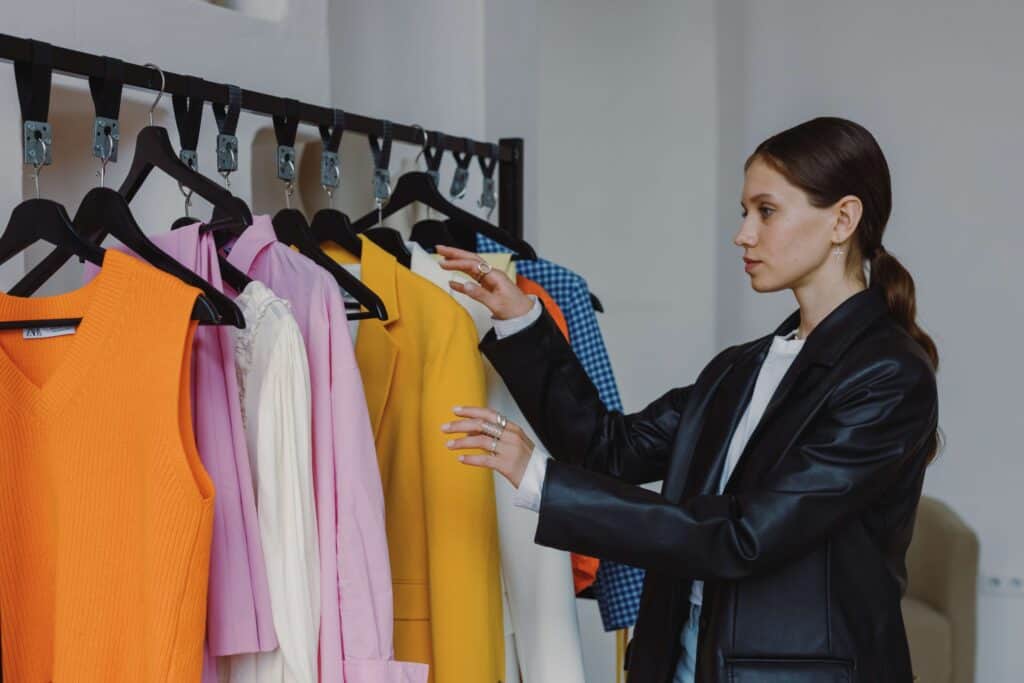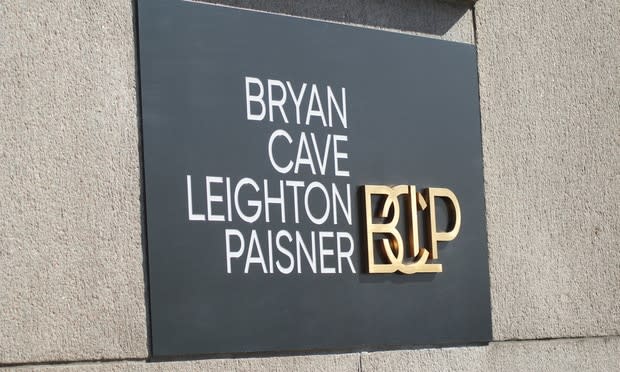It’s your first day of work and you have zero idea of what to wear. Or, maybe you’re doing an in-person interview and can’t remember what you should wear on the bottom (too many Zoom interviews to count)! What’s the best way to figure out the right business attire — aka, what to wear to work?
Here’s your go-to guide for what different types of business attire actually mean, how to know which one to wear, and top tips for dressing for success.
What Is Business Attire?
Business attire is what you wear to work — whether that’s on a work Zoom call, in an interview, or for an in-office meeting. This attire will vary depending on where and for whom you work. For example, you might wear more formal clothes if you’re a lawyer meeting with clients at a law firm. On the other hand, if you’re working for a laid-back social media company, the dress code might be more casual.

Building Your Personal Brand
Preparing to enter the workforce? Learn how to build an online presence that stands out to employers.
Avg. Time: 2-3 hours
Skills you’ll build: Personal brand, LinkedIn, online presence management
Types of Business Attire
There are five main types of business attire, ranging from casual to business formal. Some of these styles might blur or be similar between different companies. For example, a conservative law firm’s smart casual business dress code might be more like business casual when compared to a relaxed start-up’s smart casual (which might be more like casual).
While business dress code lines can be blurred (more on how to distinguish them later), these distinct types can help you differentiate between the ends of the business attire spectrum.
Casual
Casual business attire is clothing you might wear in your everyday life, yet it’s important to be conscious that what you’re wearing is still okay for the workplace (i.e., no profane graphics, ripped jeans, or athleisure). This dress code may include t-shirts, jeans, sneakers, and casual dresses.
When to wear casual business attire: at relaxed, flexible companies; for casual networking coffee chats; working from home; team outings to casual spaces (e.g., picnic lunch or volunteer event)
Smart Casual
Smart casual is a dress code that “dresses up” your everyday wardrobe. For example, you may add a blazer to a t-shirt and jeans or wear a more refined sweater and some nicer accessories. Smart casual isn’t about swapping out your casual clothes for more professional ones but rather elevating them to make you look slightly more formal.
When to wear smart casual business attire: regular office days at more relaxed companies; internal meetings; offices in creative fields
Business Casual
If smart casual is dressing up a casual dress code, business casual attire is dressing down a formal one. While jeans aren’t typical in this dress code, neither are suits, unless the former is dressed up and the latter is dressed down. Blouses, dress shirts, slacks, dress pants, and blazers are all staples in this dress code.
When to wear business casual attire: networking events; internal work presentations; more relaxed client meetings
Business Professional
If all work dress codes are supposed to be professional, it’s logical to wonder — what is business professional attire? Business professional attire is the midway point between business casual and formal. It’s traditional, like business formal, but allows for more flexibility with how you show off your style (like with statement accessories or patterned clothing).
When to wear business professional attire: client interactions; formal presentations; business travel; more traditional work environments
Business Formal
Suits, pantsuits, and formal dresses make up this dress code, one that’s common in traditional, conservative working environments. Business formal means business, and items that show personality and vibrancy are far less common with this attire. Think of what characters wear in TV shows and movies like “Succession,” “Industry,” “Billions,” or “The Wolf of Wall Street.”
When to wear business professional attire: high-level meetings with executives; board meetings; formal industry events; international business; conservative work environments
Determining the Dress Code
With so many types of business attire, how do you know what to wear to an interview or for your first day?
“Every company’s description of what is acceptable for the office is different,” Angela Denae Lynch, personal stylist at Angela Denae Style Studio, says. “The first step is to ask the hiring manager if there is a dress code or to explain what people on the team usually wear to work.”
>>MORE: What Is a Hiring Manager (and How to Talk to One)?
There’s no harm in asking — even if it may feel awkward, it shows that you want to respect the company culture. Before one of my first summer internships, I almost let the hiring manager hang up the phone before I asked about dress code because I was embarrassed to ask. But it was worth it! She gave me a run down of not only what type of business dress code she expected (smart casual), but what that meant to her (“no jeans, but comfortable and personal”). I quickly put away the pencil skirt I was originally planning to wear and opted for linen pants and a more comfortable shirt instead — and instantly felt like I fit in when I arrived at the office the next week.
You can also take hints from the company’s website or LinkedIn to see what employees wear in company photos. Or, if you have contacts at the company, reach out to current employees for insights on the dress code.
Amanda Wood, CEO and founder of The Haute Edit, a styling services company, recommends looking for norms in the industry, too. For example, finance is typically a more formal industry than marketing.

Expert Tip
Pay attention to the fit of your clothing. Regardless of the dress code, properly fitted attire can greatly enhance your professional appearance. Clothes that don’t fit well can make you appear sloppy or unprofessional, while well-fitted garments convey confidence and attention to detail.
How Has Business Attire Changed Since Remote Work Became Popular?
Since the pandemic, 12.7% of employees work from home full-time, and 28.2% work a hybrid model, according to Forbes. This means that more than a third of people have some sort of remote flexibility at work.
What does this have to do with business attire? If you’re like me, you’ve probably worn sweatpants or even pajamas for at least some hours while working from home. As more people adjust to hybrid or in-person schedules, business attire still follows the same general categories, but what’s popular in each dress code — and what dress codes most companies follow — has become more casual and focused on personal style in many industries.
“A new dress code has emerged of basically, ‘please look professional, you’re representing the company, but you can dress more casually,’” Wood says. “Smart casual has become the norm: not as many suits, (but if wearing a suit, sneakers are fine), jogger style office pants, and nice jeans.”
Lynch says, “comfort has definitely become the priority since the pandemic,” and her clients are trying to level up their comfortable outfits with a touch of style.
“They’re looking to elevate their Zoom outfits, create a hybrid work capsule wardrobe, or just wear pieces that don’t make them feel like they rolled out of bed.”

Career Readiness
Learn how to land your dream job, from how to leverage your story and career mapping to networking and resume advice.
Avg. Time: 6-7 hours
Skills you’ll build: Writing, speaking, pitching, resume writing, interviewing
Dressing for Work: Dos and Don’ts
You know the dress code, but do you feel confident in your work wardrobe? Here are a few more tips from our style experts.
Do
- Look for inspiration. You may know the dress code, but you may still need to figure out what outfit to wear. “If you need more visual direction to help you, do a quick search on Pinterest!” Lynch recommends. “Searching for ‘casual office wear’ gives you a plethora of outfit styling options to inspire you when putting together your work looks.”
- Keep an eye on your coworkers. Try your best to figure out the dress code from the hiring manager or company LinkedIn before you go in, but once you start, observe what others wear. “I always tell my clients to start the first few weeks of a new job wearing ‘business casual’ or ‘office professional’ clothing,” Lynch says. “Once you see what your coworkers wear, you can start to acclimate your outfits to align with them.”
- Consider how you want to present yourself. When styling, Wood likes to ask personality questions. What are your goals? What are your aspirations? What are three words that you would like someone to think the minute they meet you? These questions help you determine what style makes you feel comfortable and confident.
- Choose appropriate footwear. Your footwear is part of your business attire — it should be comfortable and align with the company’s dress code.
- Wear functional clothing. While I knew the business dress code of one of my internship offices, I didn’t know that the air conditioning was on full blast all day! I was so cold the first day that I couldn’t focus well. Make sure your business attire fits the office environment, too, whether that’s bringing an extra sweater (like I did!) or wearing stylish yet functional shoes.
Don’t
- Go too casual. “Avoid wearing very casual clothing such as: ripped jeans (or any jeans period), hoodies, graphic t-shirts unless you are told those are already the office vibes,” Lynch says. You should always maintain professionalism, even if the dress code is more relaxed.
- Leave your personality out. “Don’t create a style you think you should have or conform to norms or older traditions that make you uncomfortable,” Wood says. “Create a style that is true to yourself, that will help you achieve your career goals, and that you will be comfortable in.”
Image credit: Ron Lach / Pexels

